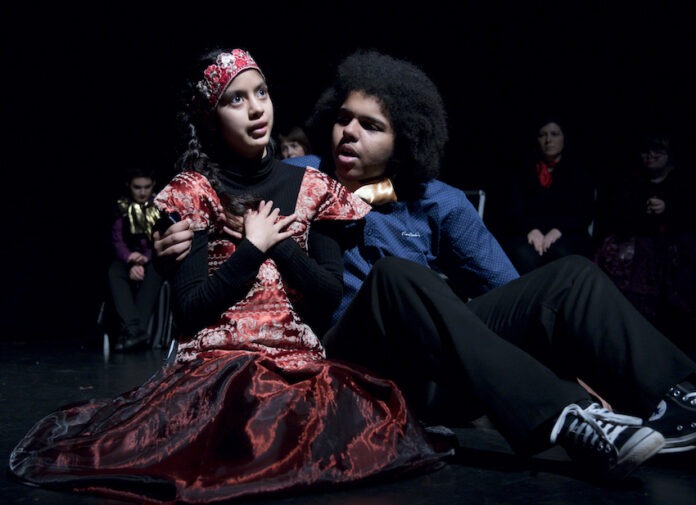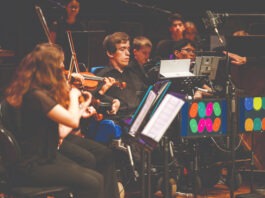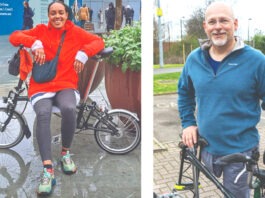Taking a look at how theatre can be used to empower learners with SEN. Joanne Skapinker
The pride that he takes in this, and the passion that he’s got for it, has really come bouncing out of him. And it does wonders for his confidence. When he’s performing, he seems to be more centred and calm, and his anxieties decrease.
For the young actor described above, performing onstage is a particular joy, offering him the opportunity to tell a story to others, work as part of a theatrical company of young people and surprise himself with his abilities. It’s especially important for him to find projects which strengthen friendships and decrease anxiety, as these are key challenges which form part of his day-to-day life with complex autism.
Theatre is, at its heart, about finding new ways to communicate with others around us, and about forming an ensemble – a team who will work together to understand each other. For young people facing additional barriers to learning, socialising, communication and participating in groups, it’s infinitely rich in opportunities.
A play is play
Theatre can be for absolutely everybody. Whether you are a teacher exploring drama as part of your curriculum, a carer looking for new activities for young people, or a parent keen to try out fun games at home, there are many accessible and enjoyable ways in. The first big question is where to begin.
When you start to plan for a theatre-making project for young people with SEN, it can be tempting to begin by deciding what the very end will look like: what exactly your young people would do in a performance or final session. If you are planning a show for an audience, it’s tricky and daunting to make these decisions at the very beginning. Your young people’s ideas, choices and preferences will provide the most specific, creative ideas to shape your project and ensure students feel a real sense of ownership and pride in their work at the end. Whether you are planning a school performance, or simply exploring activities at home, the best way to discover young people’s ideas is through play.
Games and improvisation activities can introduce the story and characters in a relaxed environment which young people will enjoy. For example, young people exploring Shakespeare’s Macbeth could try the game “Double Double”. Everyone makes a circle as a group and taps their knees to a rhythm. The group sings the words “Double double, toil and trouble, fire burn and cauldron bubble. Now it’s time for [participant’s name] to tell, what’s s/he putting in the spell?” Participants invent an ingredient which they would put in a witch’s spell – frogs’ legs or a fairy’s breath – or simply perform an action for that ingredient, which everyone copies. During games, watch closely while you play and make notes about your young people’s best ideas, what holds their attention or makes them laugh, and which characters and actions they especially like to watch or perform. This will prompt plenty of thoughts about where to go next.
Exploring new worlds
The worlds and characters of the story you’d like to tell will provide diverse and interesting opportunities for your young people to learn about the play. Think about all of the settings in the story and write them down. Are we inside or outside? What is the weather like? Does the place change overtime? For example, does the forest become more overgrown as the story progresses? Ensure that your list encompasses all of the senses, including what we might see around us, feel underfoot, hear in the distance, smell in the air, or taste on our tongue.
Sensory exploration is a great pathway into drama for many students with SEN. Consider the space you will be working in: can you turn it into the world of the play so that students can experience it? Once, while studying The Tempest, we projected a big picture of the sea on the floor of the classroom and used a fan and water sprays to experience what the weather would feel like. You might set up a series of small sandboxes, with wet sand and dry sand, to think about the difference between a stormy and a sunny beach. This enables non-verbal students to enjoy improvising within the play’s world by playing with the sensory environment to contribute their ideas. Inexpensive sensory resources to explore include feathers, bottles of scent, bubbles, pillows, fabrics and torches. Music is also one of the most powerful and easily accessible tools in your sensory toolbox; consider which genre or instruments would best evoke the universe of your play.
Building your ensemble
Making theatre with your young people enables them to learn about working together and becoming an ensemble. Whilst this can be an initial challenge for some people with SEN, it can have a long-lasting legacy in other projects and in teaching, as well as in students’ lives. One teacher reported: “My students find it difficult to relate to others, understand their own feelings and emotions, show empathy or communicate effectively with others. Through the process the students are precision taught to connect with and support each other. Come the curtain call, my students are often elated; they certainly want to do it again. They have experienced a change. Things they found extremely challenging are overcome.”
To work on creating an ensemble, challenge your group to make a big shape together using just themselves. For example, you could make a ship, with young people as the bow, rigging and wheel. Use different levels and ensure everyone is linked to someone else in the shape. Everybody in the room is a vital part of your ensemble, so make sure that teaching assistants, carers or even other family members have a part to play too, whether it’s taking photos so that you can market your production or being a part of the storytelling.
Communicate!
As the “theatre director” for your project, you are also the storyteller-in-chief. Young people will imitate your energy and ideas and you are their single biggest motivator. It’s important to model the enthusiasm that you would like to see from the room; show your young people how a character might move, so that they can copy you and feel confident to add their own ideas too.
It’s also important to consider all of your young people’s diverse talents as storytellers. Every way in which human beings can communicate can be a part of how an audience will understand and enjoy your story. So, if your young people use BSL, Makaton, switches, PECS, eye contact, or singing, make sure that these are part of how their character acts onstage. For example, one student with PMLD, who uses eye contact to communicate, played a vital role in a play by stopping an onstage battle with a single look, portraying a hugely powerful character.
Your young people will surprise you with their interests, talents, and enjoyment in the story you are telling together. One teacher reported, “Our dancers were questioned when I submitted our cast list for our show as being too ‘high risk’ a cohort of pupils; they can on occasion display extremely challenging and violent behaviour. This work has helped to show their true potential and highlighted the importance of letting our pupils have a go and be truly aspirational.”
Further information
Joanne Skapinker is a drama professional with a specialisation in inclusive practice. She works as Senior Festival Coordinator at cultural education charity Shakespeare Schools Foundation:
www.shakespeareschools.org




